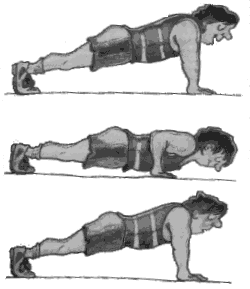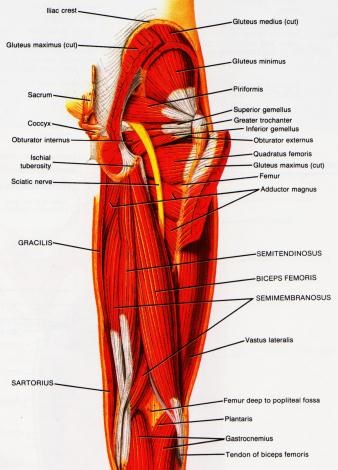Fast training tip: when doing exercises with weights - or body weight exercises - working one side and then the other, work your STRONG side first.

This advice may seem counter-intuitive: shouldn't we work our weaker side first so we don't do more reps on our strong side that we can do on the weak side?
Here's a couple things: appropriate reps/weights/sets for goal and neurological patterning
Reps: except for very rare occasions*, work with a weight where you *can* do the same number of reps on both sides. granted one side may be more of a challenge than the other, but if there's that big a discrepency with a given weight, pull back and do more work with a weight both sides can manage till you get better parity.
*(for those who have heard about "going to failure" that's what we're talking about and unless you're body building, you can set that aside you will not be going there)
neurological training: the main thing about starting with the stronger side is that it kinda teaches the weaker side the proper way to do the move. Form is everything. According to both Gray Cook in his FMS training, and Eric Cobb in his ZHealth work, there's a neurological patterning that happens in the body, and happens very quickly. The stronger side is usually also the side that is more proficient at a move. Doing great reps sets the pattern for the body.
Neurological effect is another reason to quit before losing form, and it's another reason for picking an appropriate range of reps - doing only perfect reps to do in a set, and to quit as soon as form starts to slide. Once form starts to go, according to Cook and Cobb, we're teaching our bodies to do poor form.
A great approach to getting in good work, and gating rep patterns to maintain good form while building strength and not overreaching is Pavel's ladders (described in detail in Enter the Kettlebell). The ETK ladders approach is a great way to build up volume for strength and endurance, while ensuring perfect rep, and quitting way before form starts to slide. In the ladder concept, you might do one rep on your strong side, then one rep on your left side. Then a break. Then two reps on the strong then two on the weak, break, then three/three and so on, up to five. Pavel has a beautiful system of mixing up intensity and developing progress throughout a week: starting out may be three ladders of three, building up to five ladders of three, then moving up to four steps on the ladder for three ladders, etc. You can do a hard, med and light day this way by varying the number of ladders, too.
It's this pattern alone that makes Enter the Kettlebell (ETK review)a great training program: increase volume progressively, gradually, varying rest and ladder amounts. With a max of five reps, with a doable weight, that's avoiding failure, and keeping great form.
The main take away from this post: in exercises that work one side at a time, start with your strong side - let your reps be gated by your weaker side, but start with your strong side, using perfect form to teach your body how to execute well consistently.







 Some folks mistake strength for massive muscles, or take strength to be expressed as feats of strength, like tearing a phone book in half, or throwing a stone half way across a football field. But strength is our ability to contract our muscles to do work: to hold a pencil; to sit up; to roll over in bed. All of these movements represent the coordinated actions of muscles working together to support us moving against gravity in physical space.
Some folks mistake strength for massive muscles, or take strength to be expressed as feats of strength, like tearing a phone book in half, or throwing a stone half way across a football field. But strength is our ability to contract our muscles to do work: to hold a pencil; to sit up; to roll over in bed. All of these movements represent the coordinated actions of muscles working together to support us moving against gravity in physical space. Why this focus on the posterior? The bum, and this may be a surprise, is the biggest muscle in the body. It's called gluteus MAXIMUS for a reason. There are a bunch of other bits in the bum, collectively referred to as "the glutes" - the gluteus medius and minimus are there too. Suffice it to say, that this is the biggest muscle group in the body, and thus can produce tremendous power. You may remember the definition of power from your early
Why this focus on the posterior? The bum, and this may be a surprise, is the biggest muscle in the body. It's called gluteus MAXIMUS for a reason. There are a bunch of other bits in the bum, collectively referred to as "the glutes" - the gluteus medius and minimus are there too. Suffice it to say, that this is the biggest muscle group in the body, and thus can produce tremendous power. You may remember the definition of power from your early 